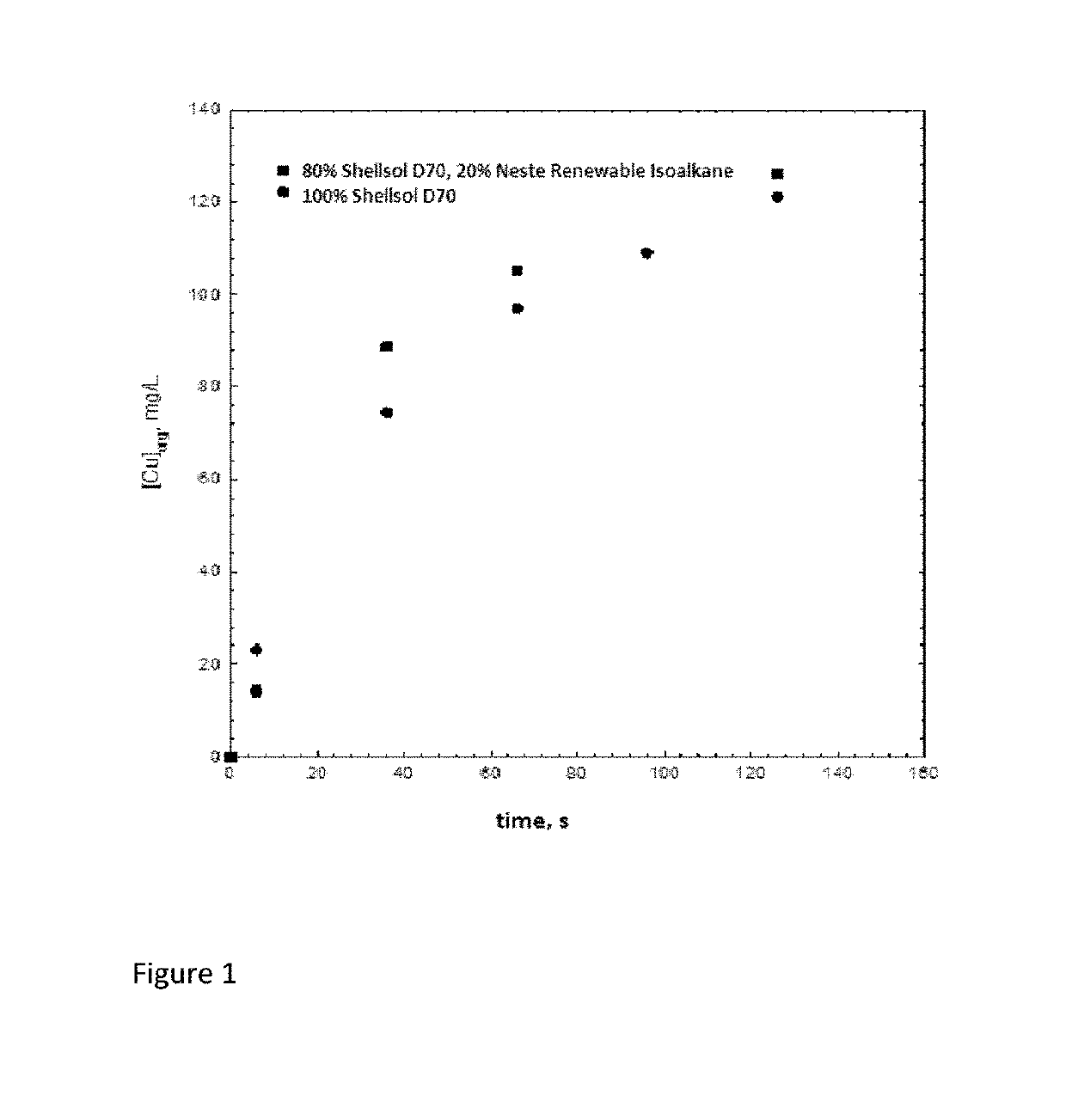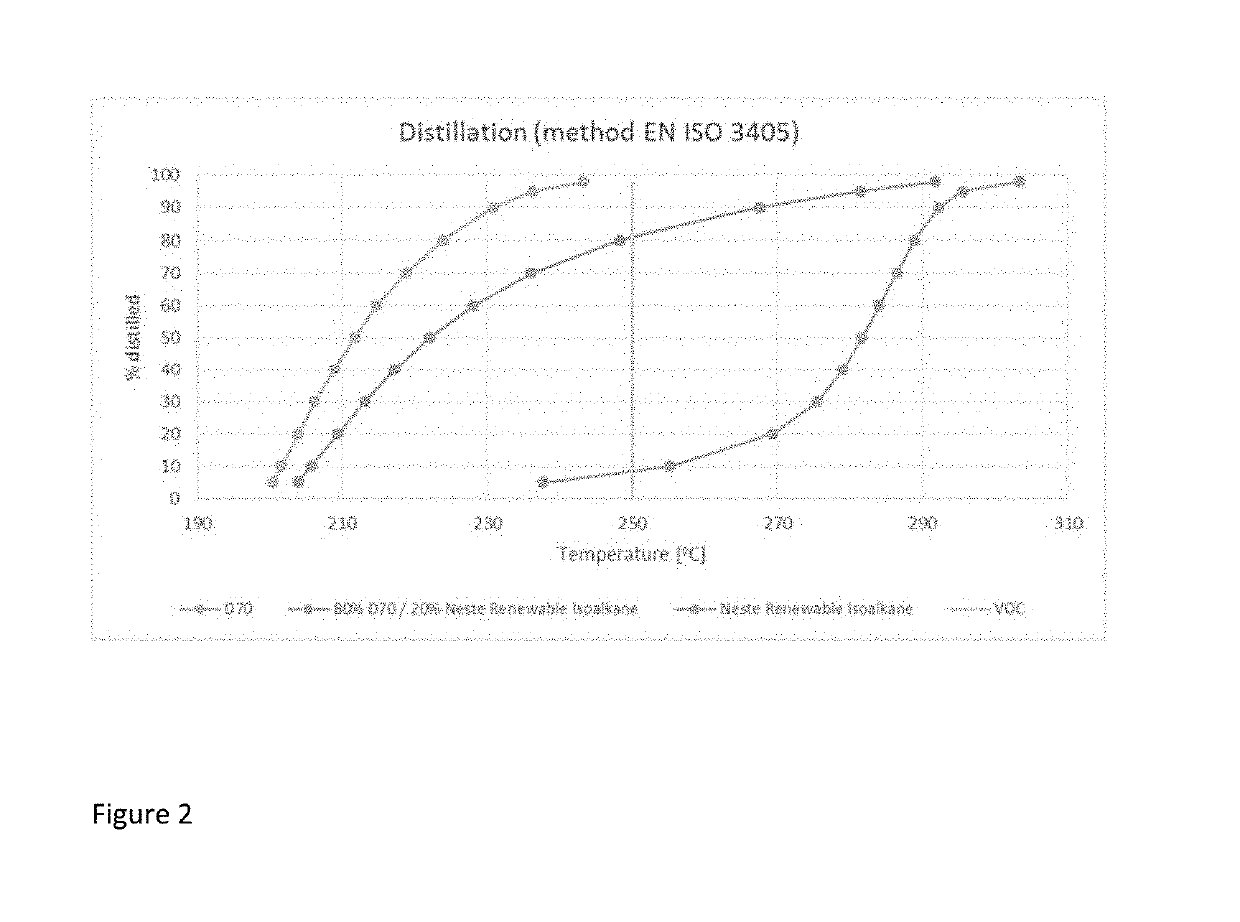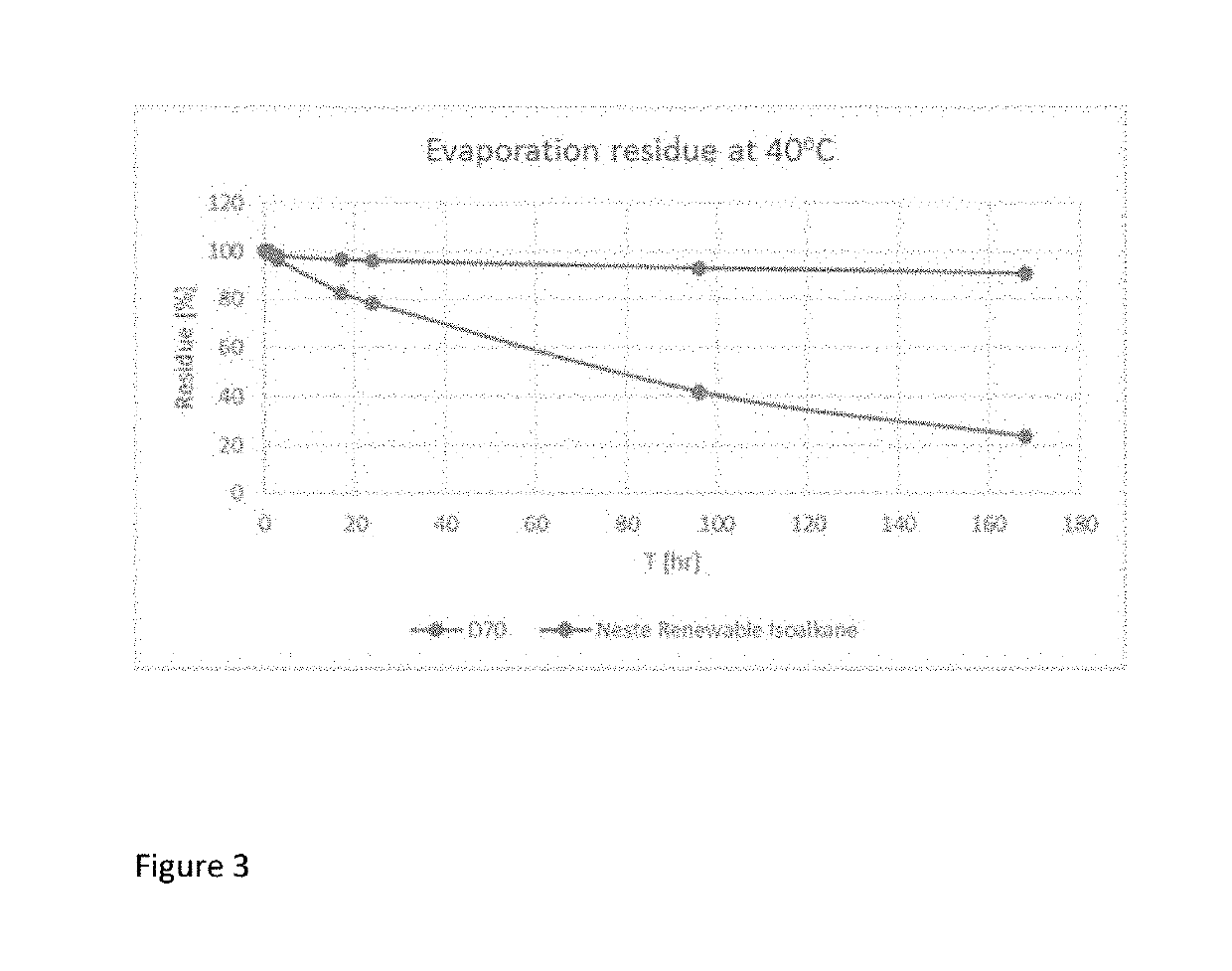Renewable isoparaffins as diluent in hydrometallurgical liquid-liquid extraction process
a technology of hydrometallurgical liquid and rechargeable isoparaffin, which is applied in the direction of chemical recycling, process efficiency improvement, etc., can solve the problems that the physical and chemical properties of these are not suitable for metal extraction, and achieve the effects of improving flow rate and productivity, speeding up phase separation rate, and significantly improving phase disengagement ra
- Summary
- Abstract
- Description
- Claims
- Application Information
AI Technical Summary
Benefits of technology
Problems solved by technology
Method used
Image
Examples
example 1
[0040]Kinetic and equilibrium laboratory tests were carried out according to standard procedures (see “ACORGA® Extraction Reagents: Standard Test Methods”In Cytec Technology Note, Cytec Industries 2005.) The conditions were: Aqueous phase: 6 g / L Cu, 1 g / L Fe3+, 60 g / L SO4, initial pH=2.8, temperature 22° C., phase volume ratio 1:1.
Organic phase: 20 vol-% Metal extraction reagent and 80 vol-% diluent.
Metal extraction reagent used was ACORGA® M5640 by Cytec Solvay Group.
Diluent was freshly prepared and consisted of either totally of Shellsol® D70 or of a mixture having 80 vol-% Shellsol® D70 and 20 vol-% of Neste Renewable Isoalkane (renewable isoparaffin).
[0041]Carbon number distribution of the Neste Renewable Isoalkane used in the example (and the following examples) was: 8 wt-% C15 hydrocarbons of which 11 wt-% n-paraffins and 89 wt-% i-paraffins, 17 wt-% C16 hydrocarbons of which 8 wt-% n-paraffins and 92 wt-% i-paraffins, 24 wt-% C17 hydrocarbons of which 8 wt-% n-paraffins and 9...
example 2
[0044]Phase disengagement tests were carried out in laboratory conditions. The tests were carried out so that the agitation after copper solvent extraction in the mixer was stopped and the separation of the two liquid phases was then visually monitored. The phase continuity was controlled during the mixing so that it was either organic phase continuous or aqueous phase continuous. The “Phase Disengagement time” was determined from the recorded height of the settled aqueous phase according to the method described on page 5 in “ACORGA® Extraction Reagents: Standard Test Methods / Phase Disengagement” in Cytec Technology Note, Cytec Industries 2005.
[0045]The Phase Disengagement tests were made in the following conditions.
Aqueous phase: 6 g / L Cu, 1 g / L Fe3+, 60 g / L SO4, initial pH=2.8, temperature 22° C., phase volume ratio 1:1.
Organic phase: 20 vol-% Metal extraction reagent and 80 vol-% diluent.
Metal extraction reagent used was ACORGA® M5640 by Cytec Solvay Group.
Diluent was freshly pre...
example 3
[0047]The phase disengagement tests as disclosed in Example 2 were repeated using the same organic phase mixtures except that the organic phase was first stressed for two weeks by agitating it with a 500 g / L sulfuric acid solution using a 1:1 phase volume ratio.
Phase Disengagement time, sPhase continuityDiluent systemOrganicAqueous100% Shellsol ® D704516580 vol-% Shellsol ® D70,4611020 vol-% Neste Renewable Isoalkane
[0048]The results with the stressed organic phase are in line with the results shown in Example 2. The renewable isoparaffines containing diluent (Neste renewable isoalkane) gives faster phase separation in the copper solvent extraction than the conventional organic diluent. Furthermore, the result implies that the renewable isoparaffinic diluent is less subject to diluent degradation. No oxygenated compounds were detected from the used diluent sample containing 80 vol-% Shellsol® D70 and 20 vol-% Neste Renewable Isoalkane as verified with GC-MS analysis.
PUM
| Property | Measurement | Unit |
|---|---|---|
| temperature | aaaaa | aaaaa |
| wt % | aaaaa | aaaaa |
| wt % | aaaaa | aaaaa |
Abstract
Description
Claims
Application Information
 Login to View More
Login to View More - R&D
- Intellectual Property
- Life Sciences
- Materials
- Tech Scout
- Unparalleled Data Quality
- Higher Quality Content
- 60% Fewer Hallucinations
Browse by: Latest US Patents, China's latest patents, Technical Efficacy Thesaurus, Application Domain, Technology Topic, Popular Technical Reports.
© 2025 PatSnap. All rights reserved.Legal|Privacy policy|Modern Slavery Act Transparency Statement|Sitemap|About US| Contact US: help@patsnap.com



